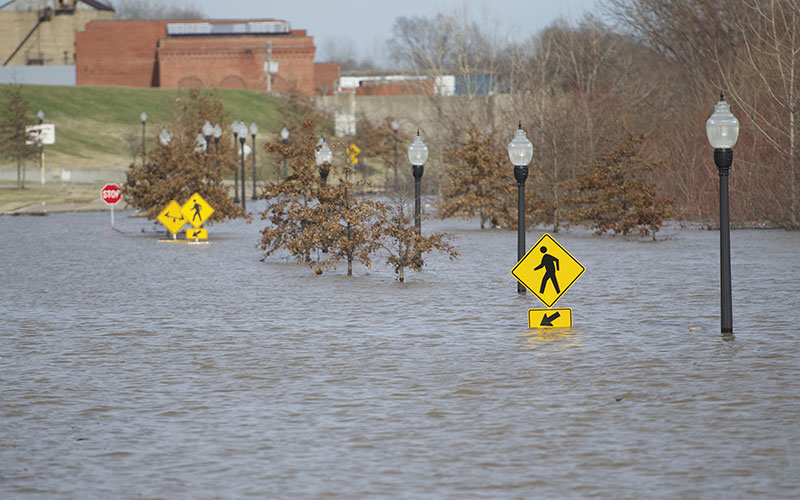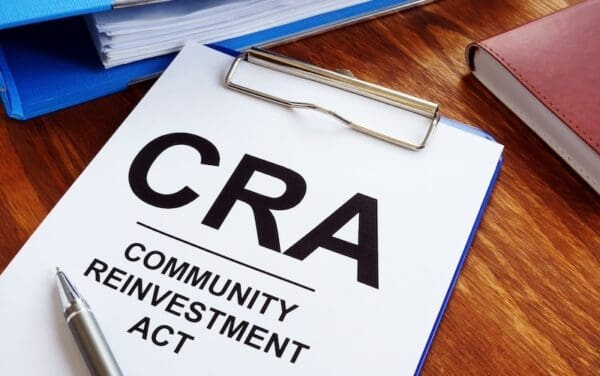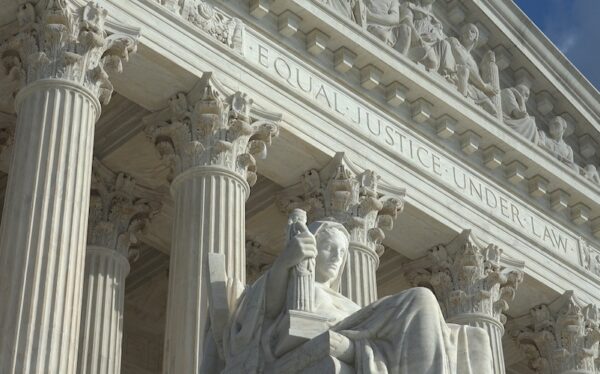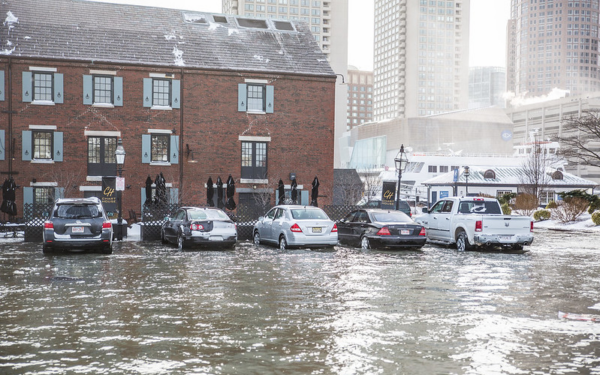
When climate risks are ignored by decision makers and government officials, who's liable for the harms that may occur?
In 2013, a two-day downpour struck the Chicago area, causing massive flooding, overflowing sewers, and millions of dollars in property damage. After the clean-up, Farmers Insurance company filed a landmark class action lawsuit against the Water Reclamation District for greater Chicago on behalf of its policyholders and other property insurance companies affected by the flooding.
Farmers claimed that the local government’s failure to prepare the municipal stormwater management system for such an intense rainstorm resulted in the flooding. The claim alleged that the 2013 severe rainstorm was “reasonably foreseeable” because Chicago’s 2008 Climate Action Plan identified increased severe rain as an adverse impact of climate change on the city’s infrastructure. Farmers argued that the government owed the property owners a duty to prepare for it, and the city had been negligent in failing to carry it out.
The lawsuit was eventually voluntarily dismissed, but it raises important questions about legal liability for when a government or other decision maker fails to ensure the infrastructure we rely on every day is able to withstand known climate change impacts. Are government entities, like Chicago in that case, on the hook for damages that might occur due to failing to prepare for foreseeable climate change impacts?
CLF set out to answer this and other related questions – because the reality is, many climate change impacts are certainties, and we’re already experiencing them. The result is a new report, Climate Adaptation and Liability, which looks at the theories of legal liability for design professionals (such as engineers and architects) or government entities (like a city or a water reclamation district) when it comes to climate adaptation of buildings, roads, and other critical infrastructure.
Click to view the Report, and read on for the top takeaways.
Building codes and regulations must look forward, not backward
Our climate is changing, and new scientific evidence suggests that the scale and pace of climate change impacts could be even greater than originally expected. In New England, we will face higher temperatures, increased heavy rain and snow, rising seas, and more intense storms.
These climate conditions will have an extraordinary impact on our built environment. And while reducing the emissions that lead to climate disruption is important, the changing weather patterns today bring a new urgency to the role of climate adaptation strategies in regulation, planning, design, and other disciplines.
The prevailing practice today, even for most critical infrastructure, such as hospitals, power stations, and major roadways, is to design and build according to the climate patterns of the past rather than those we see now and are anticipating imminently. This is like driving a car at high speed and using the rearview mirror for guidance instead of looking straight ahead – dangerous! It has significant implications for our public health and safety, and for the resilience of our economy to extreme and catastrophic weather.
Failure to act in the face of climate risk could result in legal liability.
Assessment of climate risk is mostly absent in prevailing practices, as are explicit standards for climate risk in applicable laws and regulations. But these are not the only factors that determine legal responsibility for the harm that may result from failing to act reasonably in the face of ascertainable climate risk.
Laws and regulations often impose obligations to take reasonable precautions to reduce risk, and these obligations can be heightened when considerations of public health or safety are at issue – think of facilities handling oil or hazardous substances.
For example, a building code may not require elevating mechanical equipment to the upper floors of a building. However, in a legal claim for damages, a court could still find that ascertainable flooding risks due to more prevalent tropical storms and Nor’easters compel this practice as the industry standard of care.
What’s standing in the way of building climate-ready structures? We asked experts to weigh in.
In May 2017, CLF, Boston Green Ribbon Commission (GRC), and Boston Society of Architects (BSA) brought together more than 60 experienced industry professionals from diverse professional backgrounds, such as architects, engineers, urban planners, lawyers, and government officials. We asked them to identify and think through on-the-ground barriers to adaptation and what role law and policy play in encouraging or discouraging adoption of climate adaptation and resilience strategies. Here’s the short-list:
- Regulations that constrain what the design professional can do with building designs to make them more resilient (e.g., height limitations in zoning codes restrict ability to elevate buildings)
- Inaccurate and outdated data (e.g., the federal government’s flood maps are often decades old)
- Lack of standards or metrics (e.g., no set design standards about climate resilience)
- A major disconnect in capturing the value of resilience (e.g., owners/clients do not see any near-term reduction in cost from reducing risk).
Next steps: Educate, regulate, disclose, convene, incentivize, and guide.
Here’s how we develop constructive solutions to overcome these barriers:
- Widely disseminate this Climate Adaptation and Liability report among affected stakeholders to educate and increase awareness around this issue;
- Facilitate dialogue between the design community and regulators;
- Explore current disclosure requirements (the standard contract terms used by design professionals to limit liability), and consider proposed changes to represent climate risks better;
- Convene a stakeholder group to explore standards and codes for climate-resilient construction;
- Conduct research on incentives and funding mechanisms for climate adaptation; and
- Develop a climate adaptation playbook of policy and legal tools to guide best practices.
Understanding climate-related liabilities is an important lever for moving adaptation efforts forward, gaining political buy-in, and overcoming present barriers. Through this Report, CLF is proactively engaging in this national dialogue, seeking to drive us toward a carbon-neutral, climate-adapted future with the law as a tool, not a club.




